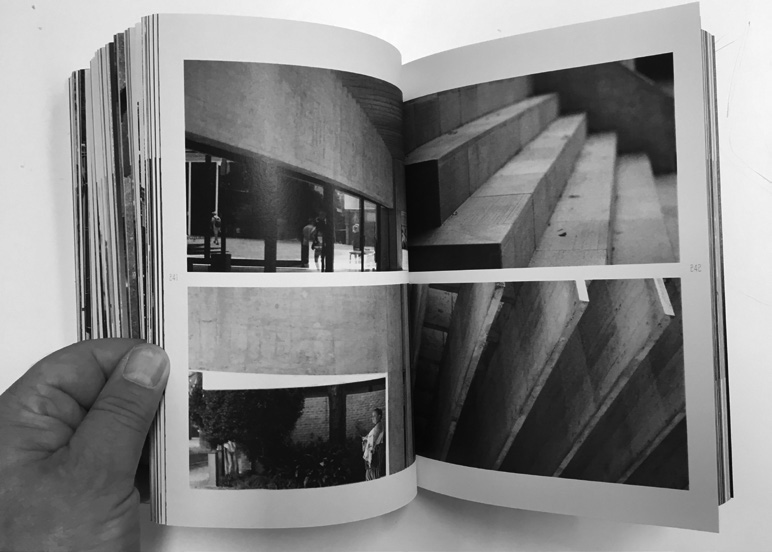Revealing Hidden Learning through the Personal Development Portfolio (PDP) in Architectural Education
Downloads
DOI:
https://doi.org/10.51588/eaaeacp.69Keywords:
extramural, motivation, collaboration, entrepreneurship, employabilityAbstract
This paper considers the introduction of a Personal Development Portfolio into our assessment for architectural education. When revising out undergraduate course structure we moved to a fully integrated model, where assessment was based on a portfolio or ‘body of work’ produced during a ten-week studio project. These projects introduce, develop and integrate understanding and ability of the key knowledge and skills of the curriculum; design, communication, realisation (technology) and contextual studies. Each year of study also includes one unit where professional knowledge is also assessed. Alongside these ‘learning outcomes’ we introduced a PDP: a separate report documenting and reflecting on everything that falls outside the predicted aims of the project.
How to Cite
Published
Issue
Section
License
Copyright (c) 2020 Simon Beeson

This work is licensed under a Creative Commons Attribution 4.0 International License.
References
Allan, D. (2003). Personal Development Planning: Case Study (Art & Design), LTSN/HEA/Advance HE. Available at: https://www.heacademy.ac.uk/knowledge-hub/personal-development-planning-case-study-art-and-design [accessed 5.8.’19].
ARB 2010, Prescription of qualifications: ARB Criteria at Part 1, 2 and 3. Architectural Registration Board, London. Available at: http://www.arb.org.uk/information-for-schools-of-architecture/arb-criteria/ [accessed 5.8.’19].
AUB (2018), BA(Hons)Architecture Course Handbook 2018, Arts University Bournemouth [availability limited].
Beeson, S. 2016, Make Re-Make: A temporary 1:1 Workshop for Architectural Education, in Olson, C., Ponitz, J., Trudell, C., 2016. 1:1; The National Conference on the Beginning Design Students (NCBDS 32) 2016, San Luis Obispo; California Polytechnic State University. p.33–38.
Dr Seuss 1997. Oh The Places You’ll Go. London; Harper Collins.
EU 2005, EU Directive 2005/36/EC on the Mutual Recognition of Professional Qualifications. Brussels; Official Journal of the European Union, 30.9.2005. L255/48–49. https://eurlex.europa.eu/LexUriServ/LexUriServ.do?uri=OJ:L:2005:255:0022:0142:EN:PDF [accessed 5.8.’19].
Dearing, R. 1997, The Dearing Report: Higher Education in the learning society. London; Her Majesty’s Stationery Office. Available at http://www.educationengland.org.uk/documents/dearing1997/dearing1997.html [accessed 5.8.’19].
Gray, A. Knight P., Little, B., Metcalf, J., Moreland, N., Robinson, S., Watts, A.G., Yorke, M., Ward, R. (2007). Personal Development Planning and Employability. HEA/Advance HE. https://www.heacademy.ac.uk/knowledge-hub/personal-development-planning-and-employability [accessed 5.8.’19].
Kumar, A. (2005) Personal Development Planning and the Progress File. Available at: https://www.heacademy.ac.uk/knowledge-hub/personal-development-planning-and-progress-file [accessed 5.8.’19].
Madoff, S.H. 2009. Art School: Propositions for the 21st Century. Cambridge MA; The MIT Press.
QAA, 2010, Subject Benchmark : Architecture, The Quality Assurance Agency for Higher Education, available at: https://www.qaa.ac.uk/docs/qaa/subject-benchmark-statements/subject-benchmark-statement-architecture.pdf?sfvrsn=3cecf781_14 [accessed 5.8.’19].
QAA, 2014, UK Quality Code for Higher Education, Part A: Setting and Maintaining Academic Standards, The Frameworks for Higher Education Qualifications of UK Degree-Awarding Bodies, October 2014, available at: https://www.qaa.ac.uk/docs/qaa/quality-code/qualifications-frameworks.pdf [accessed 5.8.’19].
RIBA, 2014, Validation Procedures and Criteria (Second Revision May 2014), London, RIBA Education Department, available at: https://www.architecture.com/knowledge-and-resources/resources-landing-page/validation-procedures-and-criteria [accessed 5.8.’19].
Schön, D. 1983. The Reflective Practitioner. London; Temple Smith





